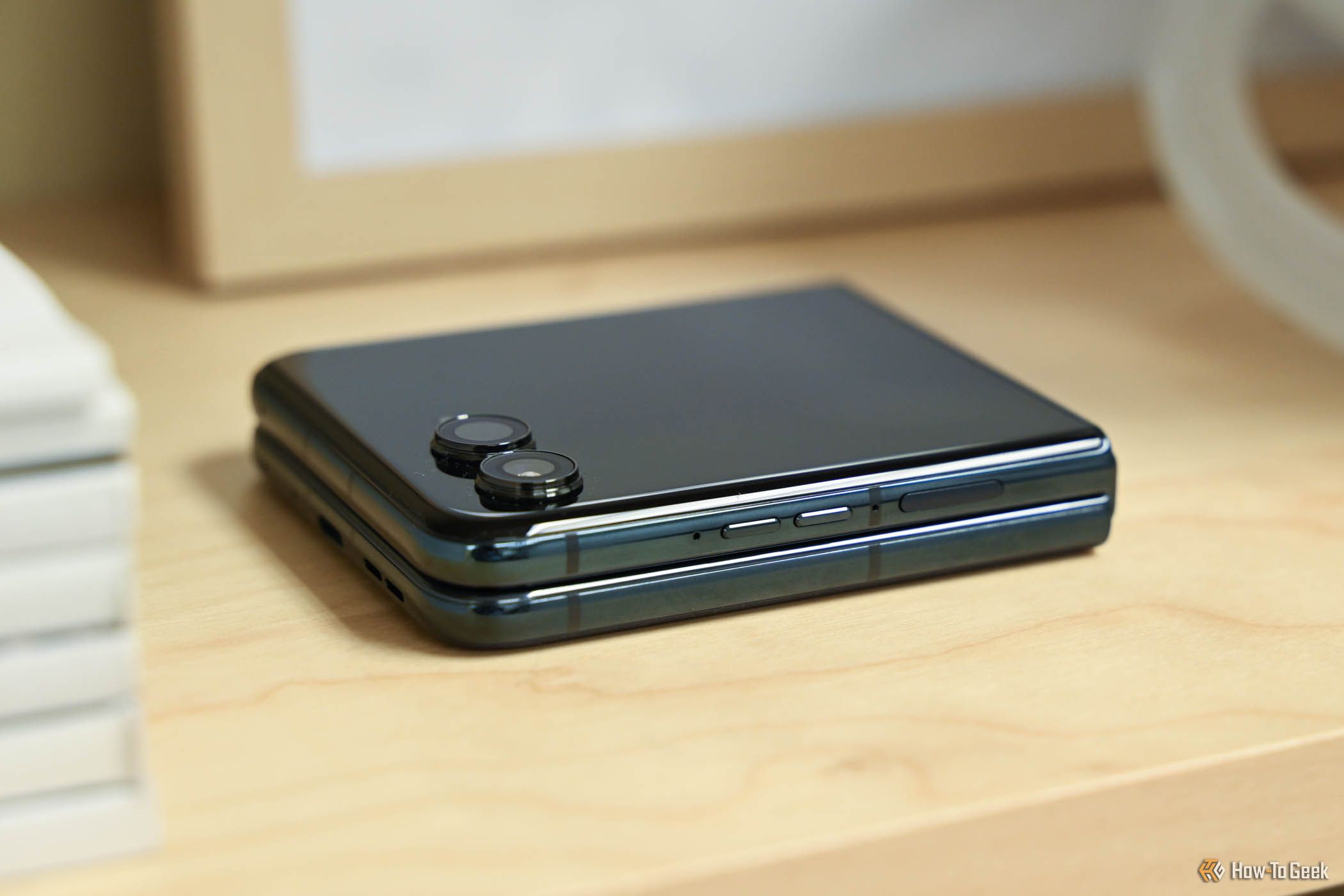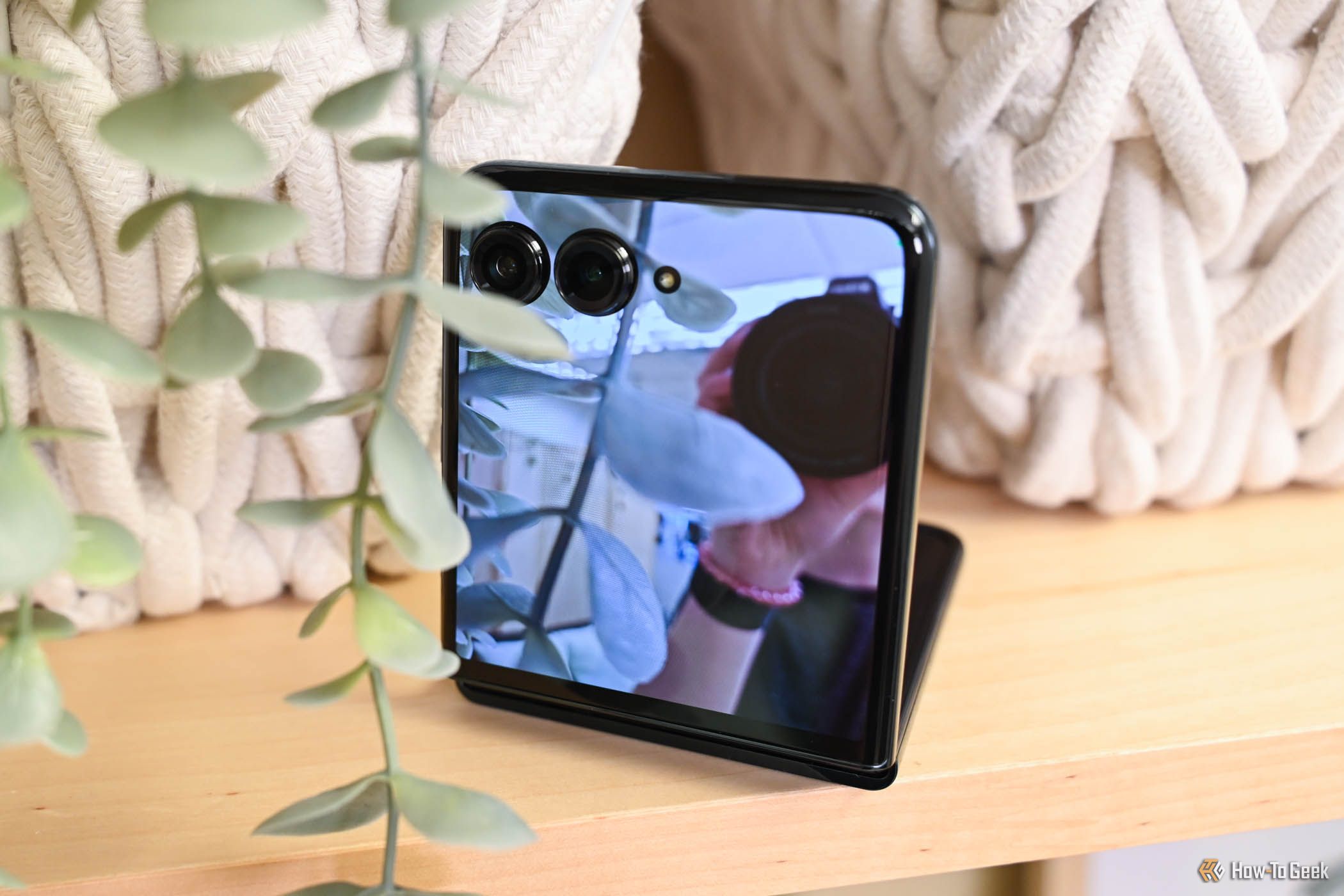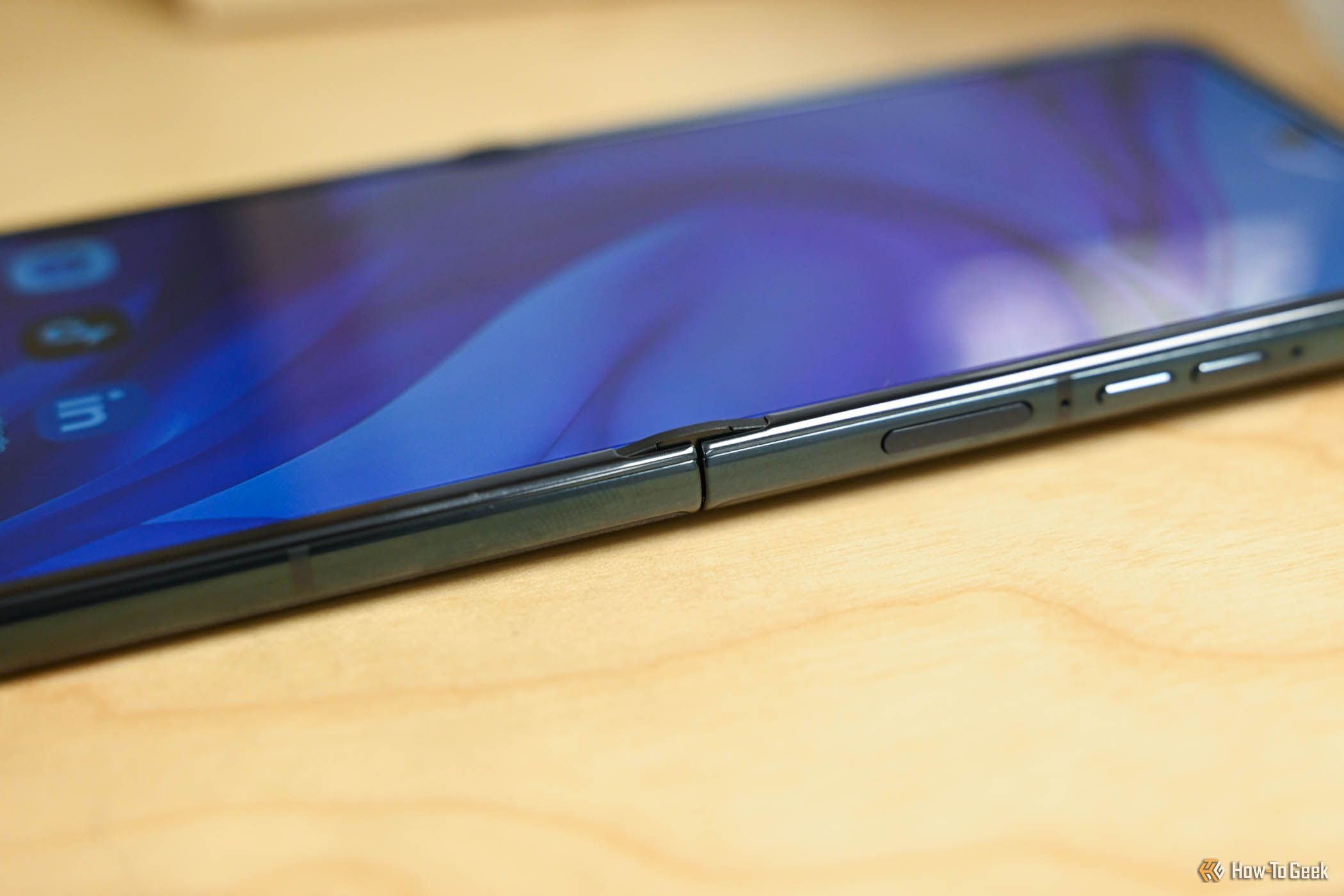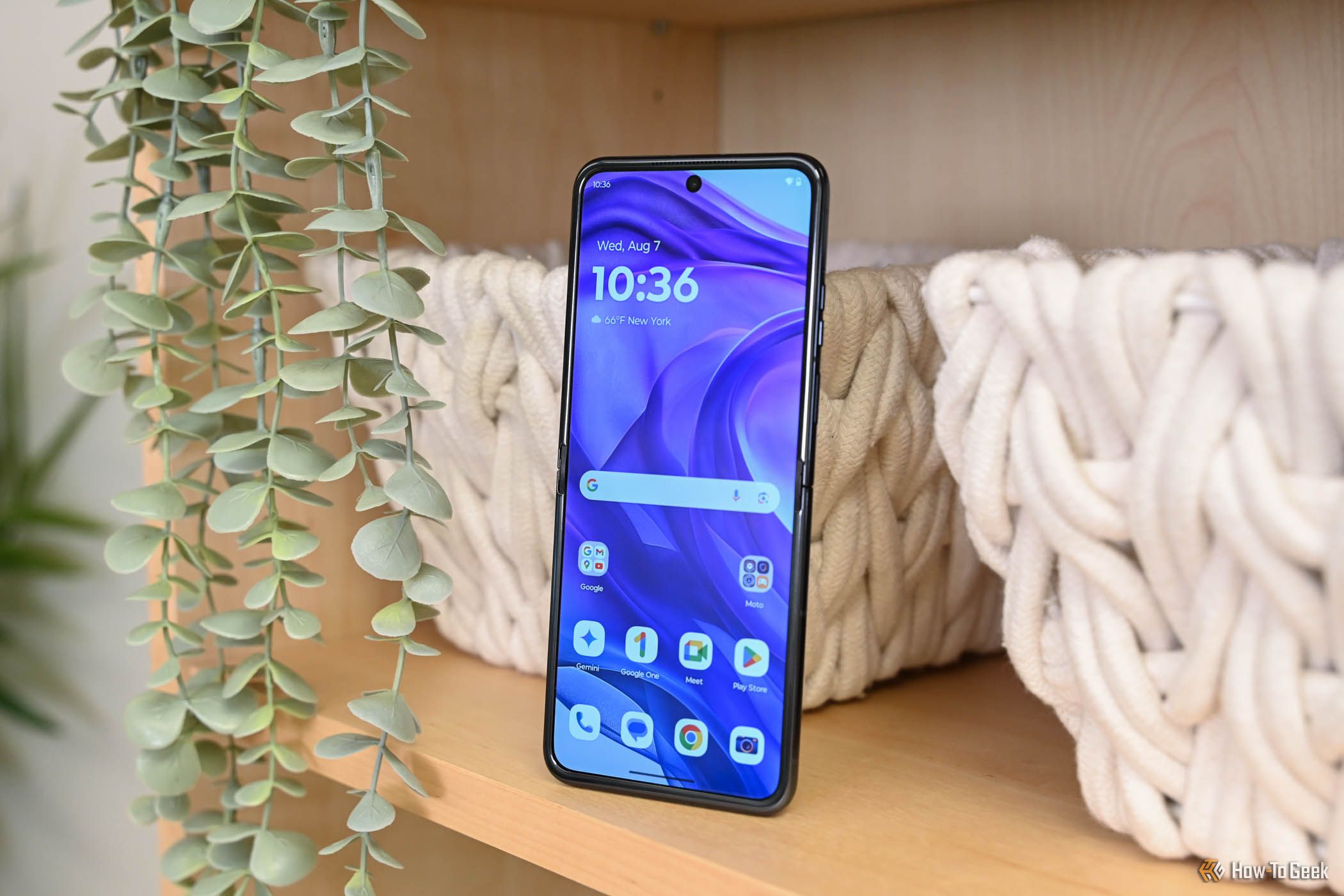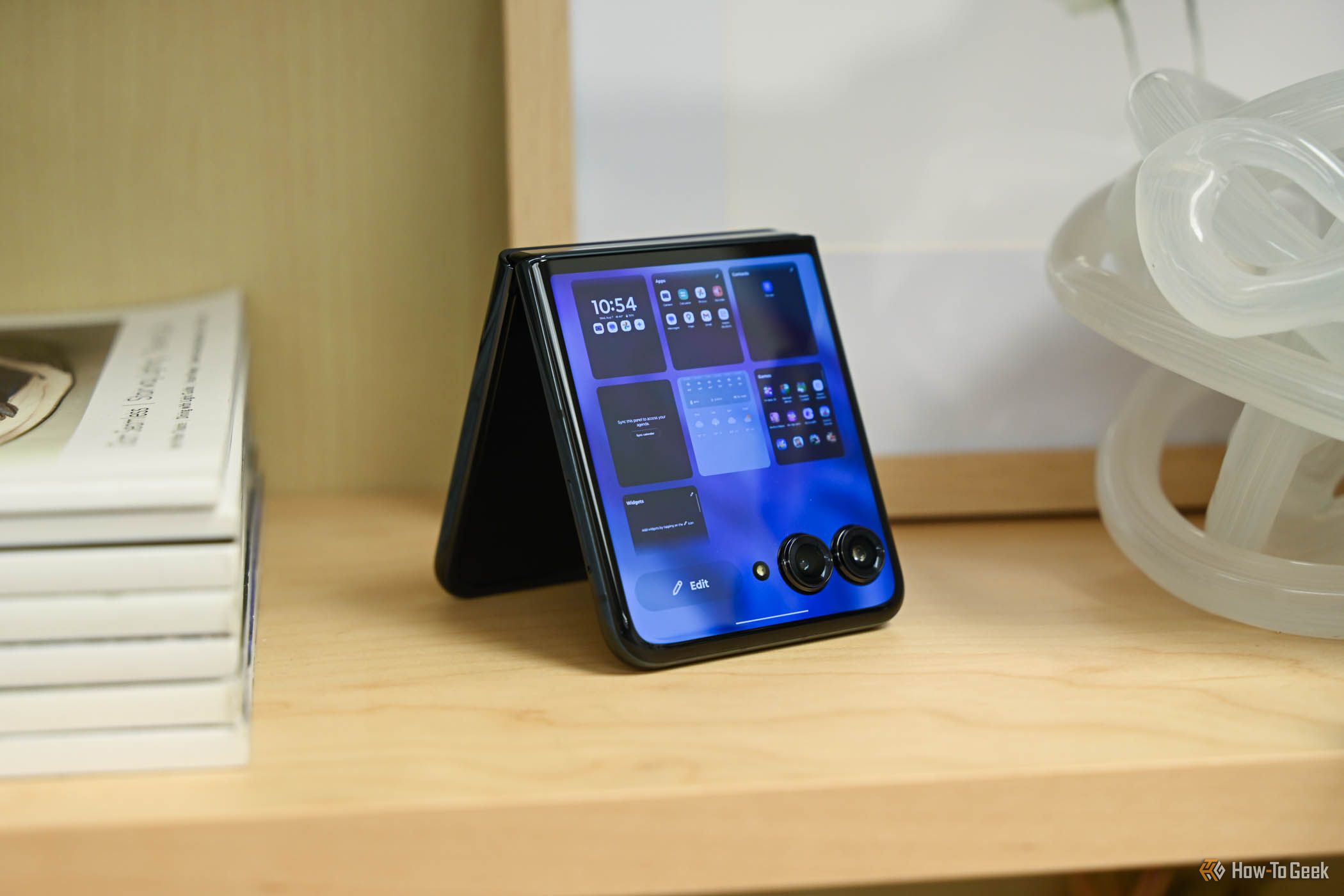Key Takeaways
- A pocket-friendly design with a large external display for quick tasks sets the Razr+ apart at a great price point.
- A versatile camera system allows for selfies using main cameras, with customizable settings for great shots.
- Initial battery life may be mediocre due to exploration, but it adjusts well with usage and has fast charging.
The Motorola Razr+ (2024) folding phone is great in nearly every way, from form to function, and it undercuts similar phones in price to make it a fantastic deal. Its compact fold can be so useful that I think that Apple (and Google) should be going in on flip-style folding phones, too.
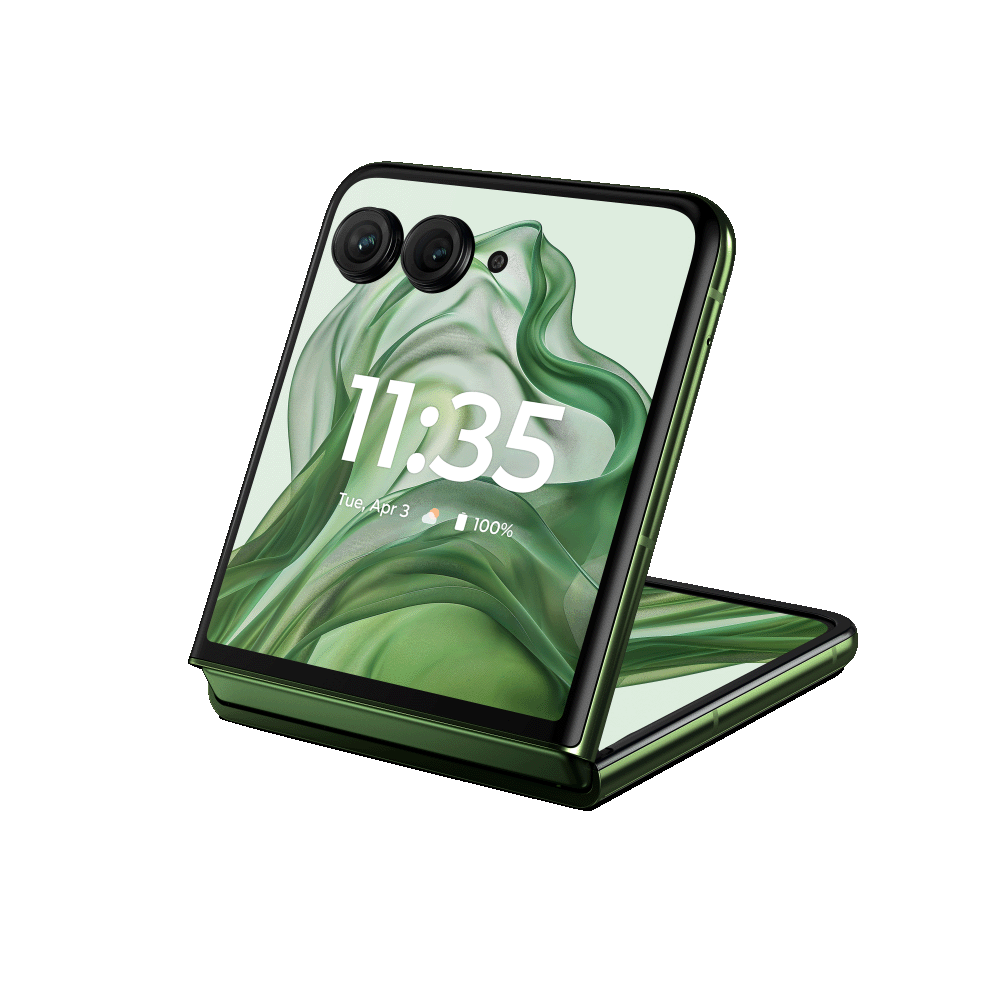

Motorola Razr+ (2024)
$799.99 $999.99 Save $200
The Motorola Razr+ powered gives you new ways to interact, capture, and create. Featuring the largest, most intelligent external display of any flip phone, you can do it all without flipping the phone open.
- Compact when folded
- Good use of external display
- Decent cameras
- Folding screen looked nice and felt durable
- 6.9-inch screen feels tall
- Only 256GB storage available
- Possibly too many settings and customizations (hard to discover)
Price and Availability
The Motorola Razr+ (2024) is one of two new foldable flip phones from the company. The Plus model features 256GB of storage (and only 256GB of storage), 12GB of RAM, and is powered by the Snapdragon 8s Gen 3. It has a 4-inch external screen and retails for $999.
The standard Razr retails for $699 and also comes with 256GB of storage but 8GB of RAM and a MediaTek Dimensity 7300X SoC. The non-Plus model also has a smaller 3.6-inch external display. I haven’t tried this model, but it seems like a great value for people hesitant to drop a ton of money on a foldable device.
Do You Flip or Do You Tablet?
Considering buying a folding phone of any kind first requires a little bit of self-reflection. A small internal debate, if you will. You need to consider why you should get a folding phone when other, non-folding ones have hit their stride. They’re so good.
I’ve come to appreciate the Razr+’s smaller flip-style size when folded in my pocket. The iPhone 15 Pro isn’t huge, but the Razr+ is just that much more pocketable and comfortable to keep in a pair of jeans.
When I took it out of my pocket, its compact size was still noticeable. The 4-inch pOLED external display provided enough space to triage messages, check sports scores, or see calendar appointments. It looked good, and I could grip the closed phone completely. My fingerprint landed on the power button, and I naturally unlocked it instantly.
Some phones fold out wide instead of top-down. I see those as more tablet replacements. If you’re looking for a huge screen that might be portable enough to carry in a pocket, the Galaxy Z Fold 6 or Pixel 9 Pro Fold are great options. Otherwise, I would recommend seriously considering the phone that folds even more compactly than our current crop of devices.
External Display Is a Key Factor
First and foremost, the 4-inch screen that bleeds around the two front cameras on the Razr+ looks fantastic. It has a 1,272 x 1,080 resolution and 417 pixels per inch for a sharp picture. It’s big enough to show a meaningful amount of information. The first iPhone had a 3.5-inch screen! Razr+’s external display means you don’t have to open the phone fully all the time. The small form factor remains a benefit even while in use.
I found the Razr+ to be extremely palm-able while folded close. It’s a tad thicker than a traditional smartphone, but not by much.
My favorite use for the external display was to run the MLB app and keep track of live games, pitch-by-pitch, without ever unfolding the phone. I could cradle it in the palm of my hand inconspicuously without drawing too much attention.
While not every app will run fine—Motorola warns about this on each new app launch—all the informational apps I wanted to use worked surprisingly well. Email, weather, music, and news categories of apps weren’t a problem. I suspect old apps, games, and niche offerings will have issues compared to more modern ones.
I did run into a few instances where the front cameras prevented me from tapping on-screen buttons when using full-screen apps. The fix is to long-press a software indicator along the bottom of the display and crop the apps to fit in a smaller area. Either way, using the front screen to do stuff worked much better than I expected.
You’re Going to Shoot A Lot of Selfies
Of course, the primary draw of a flip phone with an external display is for the camera. The combination of all these elements means you can use the primary, main cameras for selfies. You can hold a pint-sized phone in your hand, see exactly what’s in the frame, and use the best cameras. It’s a win-win-win situation.
Motorola has configured the camera to snap a picture using the volume buttons, tapping on the screen, or by using gestures. If you fold the phone to prop it up as its own stand, you can hold up a hand to start a three-second self-timer.
In terms of quality, I wasn’t blown away by the photo results, but I thought they were good. I would be happy to use the Razr+ as my primary phone camera to capture important moments. These image examples are from the main camera with default settings. The camera defaults to a 3:4 aspect ratio, but you can also choose a 9:16, as shown below.
When you flip open the phone to use the camera more traditionally, the external screen shows people what’s being captured. It’s nice from both sides of the screen. There’s even a setting to display cartoon faces to get smiles out of young kids—or maybe adults.
There are a lot of customizations and personalization options available in the camera app, so it’s easy to tweak the settings and get things exactly how you want them. I found the images to be colorful without over-saturation, but as is known from different camera phone shoot-outs, people often like the most colorful options. In terms of reach, the 2x telephoto lens gets a little closer to subjects without sacrificing quality. The pictures of the pot are 1x and 2x, respectively, using the two dedicated camera systems. The yellow rose in this gallery uses the camera’s 4x digital setting.
As strong as the main camera is, the inside camera is a different story. I thought those selfie photos from it were dull and washed out. It was fine to use for a few video calls, but otherwise, the inside camera didn’t really exist during my time with it. The first photo uses the outside main camera, and the second one uses the inside camera.
The good news is that you don’t need to rely on or use the front-facing camera much. Even video calls don’t require its use if you can settle for a much smaller screen.
The Fold Is Not Noticeable, Really
The first thing I noticed about the Razr+ when flipping it open was its tall 6.9-inch (FHD+ pOLED) display—2,640 x 1,080 with 413PPI. Whereas other phones might need to scroll feeds for days, you can see so much all at once on the Razr+. You can fit lots of Instagram photos, news headlines, and text into a single visible screen.
I’m not crazy about the tallness or full length, but it’s not a deal breaker. You get used to it. I did notice that one-handed operation (with default settings) is nearly impossible. Some people may hate that aspect in the long run. Maybe one-handed use is for the outside screen, and two-handed use is for the inside one?
Because the main screen is so tall, it ends up masking the middle part of the screen with the crease. My thumb almost never ran across the screen’s fold through daily use. You can definitely feel it, where the hinge is, if you try to, but it didn’t bother me or get in my way. It’s too early to say how durable it will be, but nothing I saw indicates initial concern.
The Moto Secret Sauce
Each manufacturer uses special gestures and software to differentiate itself from the pack. So, even for people who have had other Android phones in the past, there might be some differences in jumping to a Motorola phone.
Going into this experience, I was trying to pay close attention to those software enhancements and determine which were meaningful and superfluous. After spending some time with the Razr+, I think there is plenty on each side of that coin.
For example, you can twist your wrist twice, with the phone in it, to activate the camera at any time, whether the phone is folded or unfolded. Similarly, you can flick it twice to activate the flashlight. It sounds gimmicky, but I never set it off on accident, and I really liked that there was a way to get to the camera quickly while it’s folded. That is a huge benefit of having a front screen, after all.
I didn’t particularly need a Motorola-branded notes app, a section of casual games, or a serene way to force me to unplug, but having those branded experiences also didn’t hurt anything. The more interesting app was Motorola’s Smart Connect, which allows your phone to be used on a PC—along with being a webcam or sharing quickly between phone and desktop. There are a lot of Apple-like features that are possible between the Razr+ and a Windows PC.
It’s not unique to the Razr+, but the device comes with Google Gemini so you can talk, text, or send a photo for various AI tasks and questions. You can even use Gemini from the front, external screen, which was neat.
Battery Life Is Good if You’re Not Fiddling With the Phone
I saw very mediocre battery life on the Razr+ the first week I spent with the phone because I was using it constantly. I flipped it open in various ways, trying to acclimate myself to how its folding screen and hinge worked and felt. Plus, I was going through every inch of the phone’s interface and settings. Don’t be worried if you see something similar in the first few days.
Once my curiosity was mostly placated, I saw the battery level balance out more and last much longer. Again, like the camera, external screen, and most parts of the phone, there are battery options to adjust how it fares.
Keeping the external display from being always on helped my experience the most. But Android has plenty of battery-saver options as well. The phone supports 45W charging and can be powered up quickly.
Should You Buy the Motorola Razr+ (2024)?
When using the full 6.9-inch screen spread open, like a traditional phone, the Motorola Razr+ (2024) is a very average, albeit good, phone. The device’s ability to fold in half and then make the most of a smaller external display is where the magic happens. It’s this feature that makes me wish Apple would bring folding flexibility to an iPhone model.
It’s hard to say Samsung’s Galaxy Z Flip 6 isn’t a solid option, but the Razr+, especially during one of its sales, might be the best value for this type of device. It takes some time to get acquainted with, but its design saves space in pockets and bags and makes taking good selfie photos easier.
You should be leaning toward a folding phone to fully consider this one, but if you are, you should be satisfied with the product and its price.


Motorola Razr+ (2024)
$799.99 $999.99 Save $200
The Motorola Razr+ powered gives you new ways to interact, capture, and create. Featuring the largest, most intelligent external display of any flip phone, you can do it all without flipping the phone open.


